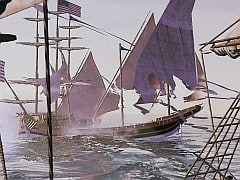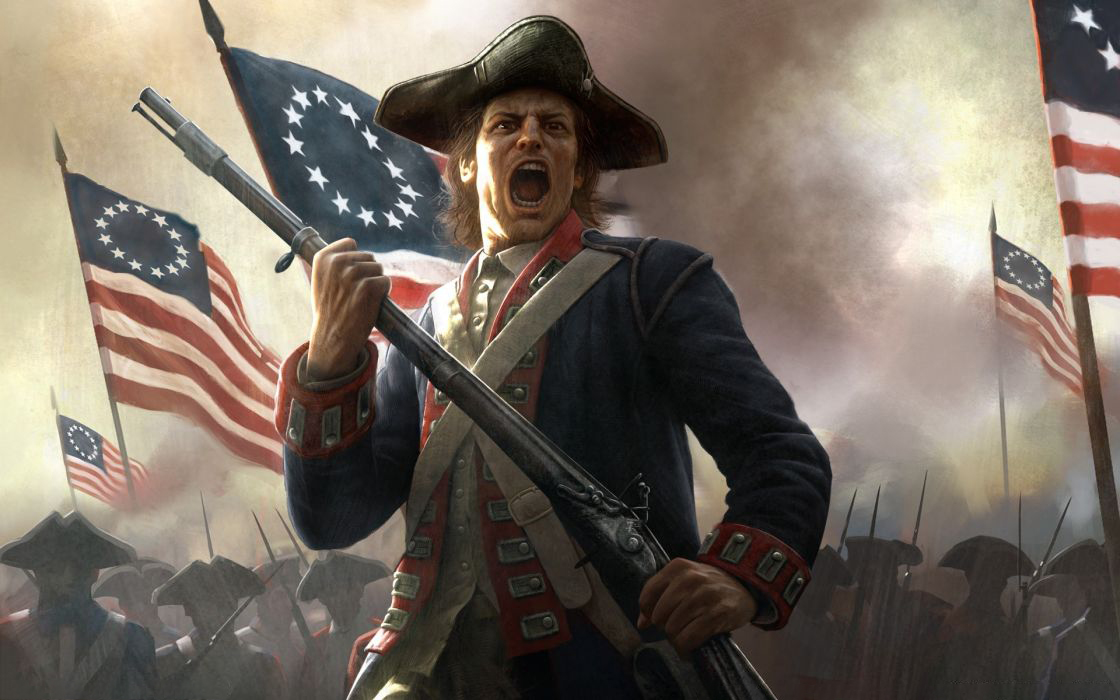You can trust VideoGamer. Our team of gaming experts spend hours testing and reviewing the latest games, to ensure you're reading the most comprehensive guide possible. Rest assured, all imagery and advice is unique and original. Check out how we test and review games here
The words of James Whitston, designer on Empire Total War at The Creative Assembly.
My name is James Whitston and I’m a designer at the Creative Assembly’s UK office where we’re currently working on Empire: Total War, the latest in the epic series of Total War games. Most of my work is focussed on the part of the game closest to my heart: battles and the units that fight them.
The historical setting for Empire is the 18th Century Age of Enlightenment, a time of new ideas and widespread change in many spheres, and the game reflects this in more ways than one. As well as the changes brought to our land battles by the increasing adoption of gunpowder weapons and military drills, players will also be blown away by the smoke and thunder of Empire’s all-new naval battles.
Previous Total War games have always boasted a broad array of units, each lovingly crafted and with its own strengths and weaknesses. Every unit is in turn part of a wider roster unique to each faction, providing flavour and reflecting the different historical styles of waging total war. This is something which we’ve taken the greatest pains to carry over to the naval side of things.
Step one was to get a feel for the ships of the period and their general capabilities. Even at this early stage, the engine was a complex beast and we were able to simulate the whole range of handling characteristics from the fast and nimble little sloop, able to out-sail almost anything into a wind, to the ponderous first rate line of battle ship, a mobile artillery battery which is happiest with the wind blowing on its rear quarter.
Next came the flavour element: what differentiated French ships from British ones? What differences were there between Spanish vessels and those of the Ottomans with whom they shared the Mediterranean, and so on. As fans would expect, we spent a lot of time on research and this was a far wider-ranging process than simply looking at the ships themselves.
We examined naval engagements from various points in our period, looking at the tactics used and the wider factors behind those tactics. This began to reveal general trends in the shipbuilding policies of different nations. For example, Britain’s strategy was to project its power at sea through weight of numbers, so it tended to build strong ships which could remain at sea for long periods without falling to bits and which were able to fight their corner in a battle. Using such information as a guide, we created factional variants of the ships we already had, and even added several whole new types where they were needed. Currently there are almost 50 ships up and running, with many more in the pipeline.
Whilst all of this goes on, new features are steadily being added to the battles. Total War’s land battle engine is a mature thing which has evolved and improved steadily across several releases. In short, we know how to do amazing land battles. The naval side of things is totally new though and we don’t just want it to be ‘ok’: it has to be great fun to play, accessible and totally absorbing, every bit the equal of our land battles and campaigns. We’ve got a lot of great ideas, and there’s an element of trial and error as we feel our way forwards, but it’s already amazing. Each new mechanism we add presents the player with more options for dealing with different situations, or even many ways of dealing with the same one, and mastering these choices is turning out to be as much fun as we thought it would.
This week the code governing dismasting and sail damage went in. Until now, fleets tended to have fairly straightforward fights, exchanging broadsides of round shot in an attempt to sink each other. Now I can order my fleet to load chain shot designed to cripple the enemy’s masts, sails and rigging. Once they’re helpless I can come in close to hammer the crew with grapeshot from a safe angle. Or I can position my ship across their bows from where I can fire murderous broadsides of round shot through the timbers and along the length of the gundeck within, turning it into a slaughterhouse. The amount of evil cackling which can be heard around the office at the moment seems to confirm that people enjoy this sort of thing!
So, what does it look like then? Simply jaw-dropping. The artists, coders and animators here at Creative Assembly are the best there is at what they do, but they’ve somehow gone way, way beyond anything even they’ve achieved before. Cannons, fire, smoke, flying splinters, wreckage, magazine explosions; you name it, it’s there and it looks incredible. Sometimes it’s a struggle to stop staring like a halfwit and do something about the enemy ships bearing down on you through the mist.
All of these ingredients are coming together nicely now. The naval battles are really shaping up as an awesome new facet to Total War’s traditional line-up of epic campaigns and land battles. That’s all from me for this diary. Next time round I’ll go through some of the units you’ll have at your disposal in Empire: Total War, on both land and sea.


/https://oimg.videogamer.com/images/e2dd/empire_total_war_6.jpg)
/https://oimg.videogamer.com/images/4198/empire_total_war_5.jpg)
/https://oimg.videogamer.com/images/46f3/empire_total_war_4.jpg)






